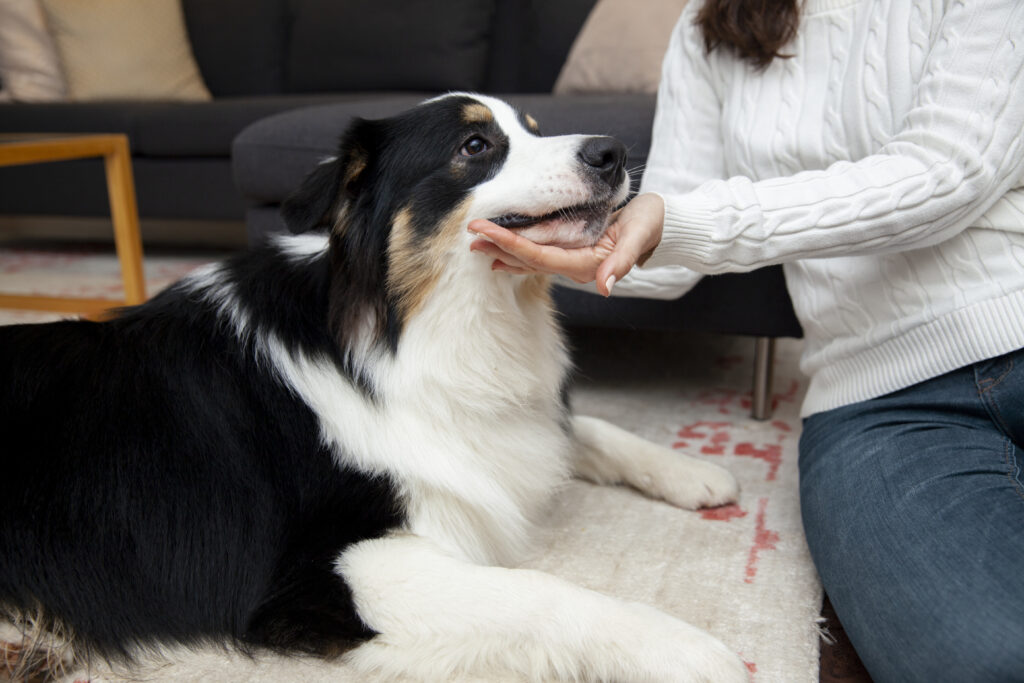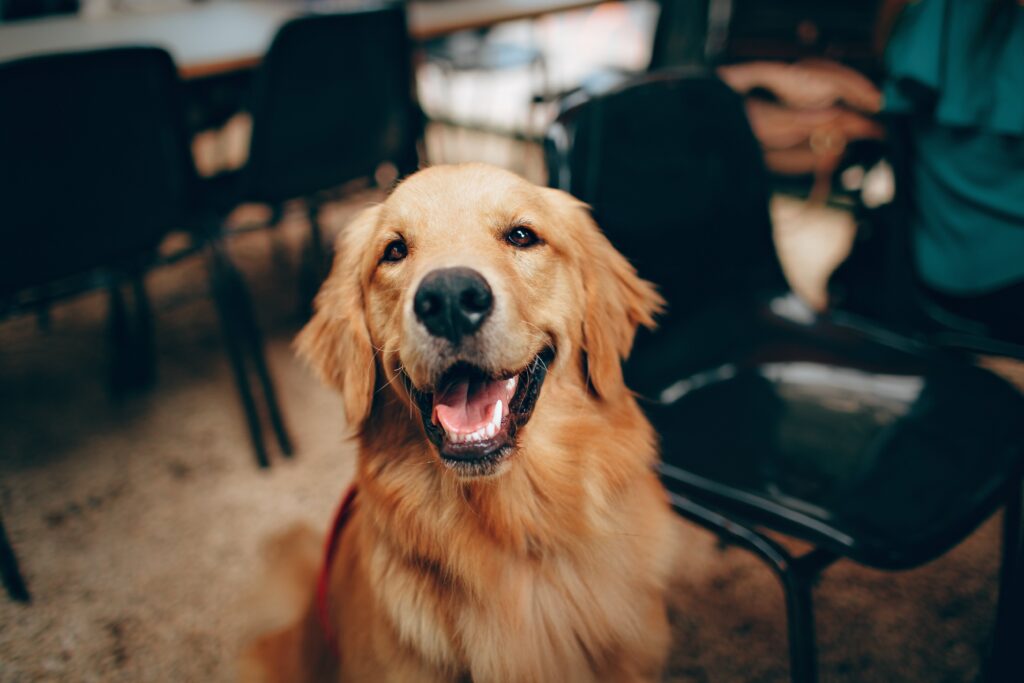
Pets have always been an integral part of our lives. They offer great companionship and unconditional love, and sometimes even act as therapists for their owners. Dogs, in particular, are known for their loyalty and affection. Due to their faithfulness, they often become your family members, and their well-being becomes your top priority. It can be concerning for you when your beloved pet starts exhibiting unusual behavior, such as panting when being petted. It always seems a mystery to the owners: why does my dog pant when I pet him.
This article will discuss dog panting and the connection between petting and panting. But before we get into this discussion, let us first know about panting and the particular behavior of dogs.
What is Panting?
Panting is a natural behavior observed in happy and active dogs and is a part/method of canine communication. In simple words, panting means to breathe quickly and loudly through the mouth. Unlike humans, dogs can’t sweat, and panting is their primary means of regulating body temperature. However, dogs also pant when petted for several other reasons, such as excitement, stress, overstimulation, heatstroke, etc.
Particular Behavior of Dogs:
Each dog is an individual that shows unique behavior, but one thing is usually common in them, which is communication. Dogs communicate through a combination of body language, vocalizations, and various other behaviors. Most of these behaviors are common in dogs. However, in particular, panting is a versatile behavior shown by dogs. It can signify a range of emotions and physiological states in dogs.
Why Does My Dog Pant When I Pet Him?
Panting is a versatile behavior that can signify a range of emotions and physiological states in dogs. Panting is typically a natural response to your dog’s heightened state of arousal. However, there may be several other reasons your dog starts panting when you pet him. Some of the important reasons are:
Excitement or Happiness:
Panting in dogs while being petted is often associated with their positive experiences. Panting for many dogs is usually a source of joy and excitement. Engaging yourself in affectionate gestures with your dog makes it exciting for him. It can lead to increased heart rate and respiration, the primary signs of panting. You may pet your dog during playtime, after returning home, or in response to a favorite treat. He may be expressing happiness and anticipation through panting. Your dog may start wrapping his tail, jumping around, or showing other signs of excitement when you pet him. In all these scenarios, panting looks to be a positive sign and indicates that your dog is enjoying the interaction.
Anxiety and Stress:
Although dog panting is often associated with excitement and positive emotions, it can also be a sign of anxiety or stress in dogs. Some dogs may feel uncomfortable or anxious when being petted. It can be due to various reasons, such as not being used to human touch or having had a negative experience in the past. Some of the additional signs of stress may include:
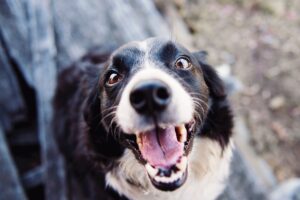

- Trembling
- Flattened ears
- Tucked tail
- An attempt to escape from petting
You may find your dog seems uneasy during petting sessions. In this condition, respecting their boundaries and providing positive reinforcement for calm behavior is vital. Panting due to a stress condition might be their way of calming themselves down. They would also try to indicate that they are feeling uncomfortable.
Heat Regulation:
One of the primary functions of panting in dogs is thermoregulation, i.e. they pant to cool down their body temperature. Unlike humans, dogs do not sweat through their skin to cool down their body heat. Instead, dogs primarily dissipate their body heat through panting. When you pet your dog, especially in warmer weather or after physical activity, their body temperature usually rises. It may lead to a spontaneous decrease in body heat through panting. If your dog is panting while you are petting it, it is a way of maintaining a comfortable body temperature.
Pain or Discomfort:
Dogs may also pant as a response to pain or discomfort. Sometimes, this discomfort may be aggravated by physical contact. Awareness of your dog’s overall health and pre-existing conditions is crucial. Petting in certain areas may cause discomfort that leads him to pant. It usually happens if your dog has an underlying health issue, such as arthritis or joint pain. However, if your dog constantly pants during petting, along with signs of pain like pimping or stiffness, it is advisable to consult with a veterinarian. A thorough examination can help identify potential health issues and provide appropriate treatment.
Overstimulation:
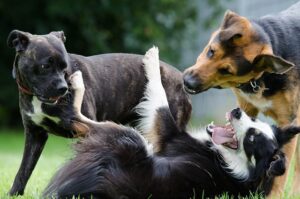

One of the most common reasons dogs pant when being petted is that they experience overstimulation. This behavior is quite similar to humans. When petted, dogs may become overwhelmed by too much touch or attention. When you pet your dog a lot, he might become so excited or stimulated that he starts panting. It is a way to cope with sensory overload.
Physical Discomfort:
Dogs also pant while being petted when they are experiencing physical discomfort. It can be due to an injury, illness, or other physical discomfort. Some of the physical problems that make the touch of petting painful or uncomfortable for the dog include:
- High fever that urges the dog to pant to help lower their body temperature
- A very full stomach or a severe condition called bloat (GVD), where dogs pant in preparation for vomiting.
- Cushing’s disease, a condition caused by excessive production of the stress hormone cortisol.
- Laryngeal paralysis, a condition that causes the muscles that open and close the larynx at the back of the throat to be weakened or paralyzed. In this condition, panting is often accompanied by a high-pitched wheezing noise known as stridor.
Other Possible Reasons for Dog’s Panting:
Some of the other possible reasons for your dog’s panting while being petted may include the following:
Heatstroke:
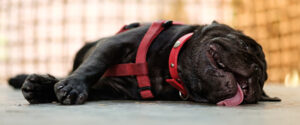

Another common reason for excessive panting in dogs is the heatstroke. It is a condition. It is a life-threatening condition in which the body can no longer control its temperature. The temperature rises rapidly, the sweating mechanism fails, and the body cannot cool down. During heatstroke, your dog would feel uncomfortable and pant heavily. It usually happens in the summer season, so avoid taking your dogs outside for a longer period.
Chronic Illness:
Your dog may pant due to a chronic illness. These may include heart failure or respiratory problems. These illnesses can cause your dog to pant heavily and have difficulty breathing normally. Cushing’s disease is another condition that may cause dogs to pant excessively, along with frequent urination, thirst, and hunger.
Medicines:
Medications, especially prednisone or other steroids, may cause increased panting in your dog. These medicines can cause panting even when your dog is not excited, stressed, or hot. It is a common side effect of such medications. If your dog is panting excessively, you should talk to your veterinarian.
Individual Differences:
Dogs have individual differences in them when it comes to a reaction to a particular behavior. Just as humans have different preferences for physical contact, dogs also vary in their comfort levels with petting. Some dogs love a vigorous belly rub, while others prefer a gentler stroke along their backs. If your dog pants while being petted, it could be his way of expressing his individual preference or discomfort. The intensity or location of the petting also affects this individual behavior.
Final Thoughts:
Panting is a multi-faceted behavior shown by dogs, and it may convey a range of emotions and physiological states. Dogs pant during petting, which can be due to several reasons, including excitement, fear or anxiety, overstimulation, or some underlying health issues. You must understand the specific trigger for your dog’s panting. To address the issue appropriately, you may have to observe the body language, create a calm environment, and provide your dog training, exercise, and petting sessions. You can ensure the petting is a positive and enjoyable experience for your dog and yourself.
